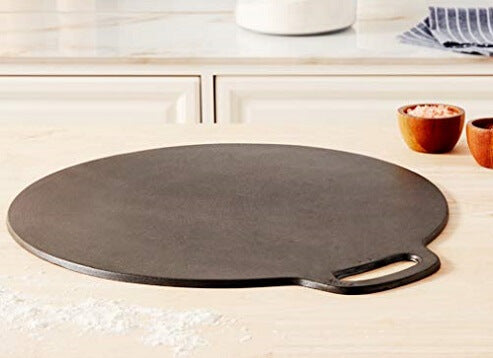In the art of baking, especially in the domain of breads, understanding the science behind the tools and processes is crucial. For kitchen professionals eager to achieve that perfect, crusty loaf, two terms frequently come to the forefront: baking stones and oven spring. These elements not only enhance the *texture* and *quality* of baked goods but also elevate the baking experience to a professional level.
At its core, the **science** of baking stones revolves around heat distribution and retention. By simulating the conditions of a professional brick oven, a baking stone helps maintain a consistent and high temperature, ensuring that the bread gets that coveted, crusty finish. When used correctly, these tools amplify the phenomenon of **oven spring**, giving a considerable boost to the bread's rise during the early stages of baking.
:max_bytes(150000):strip_icc()/pizza-stone-testing-winners-the-original-baking-steel-wdickey-7-63-0eab155b17994dcc94fe89c908bab57d.jpg)
Understanding Baking Stones
**Baking stones** are typically made from ceramics, stones, or other heat-retentive materials. They are prized for their ability to thoroughly bake bread, providing a dense, chewy interior and a crispy, golden exterior. Additionally, by drawing moisture from the doughs surface, they prevent sogginess and enhance flavor development, as explained in this comprehensive guide on baking stones.
Choosing the Right Baking Stone
When selecting a baking stone, consider its thickness, material, and size. A thicker stone will retain more heat, ensuring consistent oven temperatures even after opening the door. However, be mindful of your oven's capacity, ensuring the stone fits well and allows for adequate airflow.
Oven Spring: Unleashing Dough's Potential
**Oven spring** is the rapid rise of dough within the first few minutes of baking. This magical transformation is a result of gas expansion and increased yeast activity at high temperatures. The role of baking stones is pivotal in this process. By maintaining high, consistent temperatures, they provide the needed environment for a maximized oven spring, emphasizing the doughs expansion.
For an in-depth exploration of this reaction, check out the Maillard reaction's impact on baking.
Optimizing for Maximum Oven Spring
- **Preheat** the baking stone for at least 45 minutes before baking to maximize temperature stability.
- **Slash** the dough adequately to allow uniform expansion.
- **Steam** the oven by placing a shallow pan of water on the lower rack. This keeps the bread's outer layer moist, preventing premature crust formation.
Integrating Baking Stones and Oven Spring in Culinary Practices
For professional kitchens, the adaptability of baking stones boosts operational versatility. Beyond bread, they are perfect for baking pizzas, pastries, and any dish requiring a consistent bottom heat. For further insights on adapting these techniques, see how baking stones improve crust textures in this article on crust improvement.
Moreover, for an exploration of unconventional uses, your pizza stone might surprise you as it's adept at far more than just pizza. Dive into diverse applications at Epicurious.
Maintenance and Care of Baking Stones
Caring for a baking stone ensures longevity and consistent performance. After use, let it cool naturally to prevent cracking. Avoid washing with soap as stones can absorb it, potentially affecting future baked goods. Instead, a damp cloth can remove residue, and occasional scraping can handle stubborn bits.
Conclusion
In conclusion, for any kitchen professional striving for excellence in bread baking, mastering the interplay of baking stones and oven spring is essential. These tools and techniques, grounded in culinary science, promise impeccable results, transforming ordinary doughs into extraordinary artisanal breads.

FAQ
What is the significance of using a baking stone?
A baking stone ensures even heat distribution and retention, creating ideal baking conditions that enhance texture and flavor.
How does oven spring affect the final bread?
Oven spring is crucial for achieving a well-risen, airy loaf with a crackly crust, imparting both aesthetic and textural benefits.
Can other kitchen tools replace baking stones?
While alternatives like baking steels exist, baking stones uniquely simulate traditional brick ovens, offering distinctive crust characteristics.
This article contains affiliate links. We may earn a commission at no extra cost to you.





Leave a comment
This site is protected by hCaptcha and the hCaptcha Privacy Policy and Terms of Service apply.